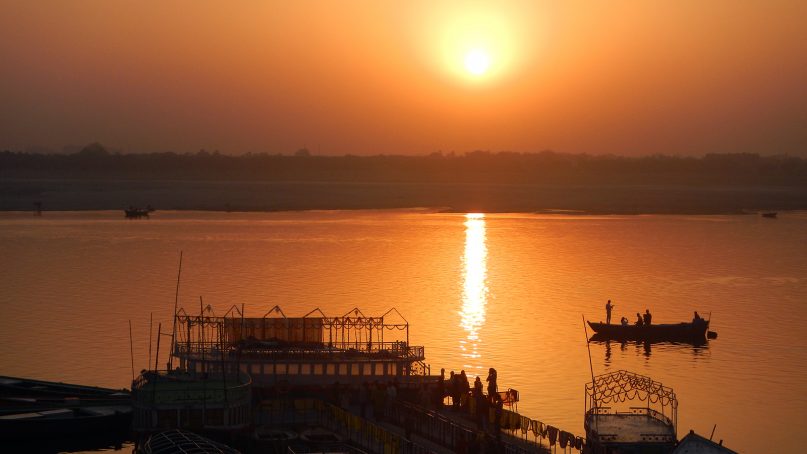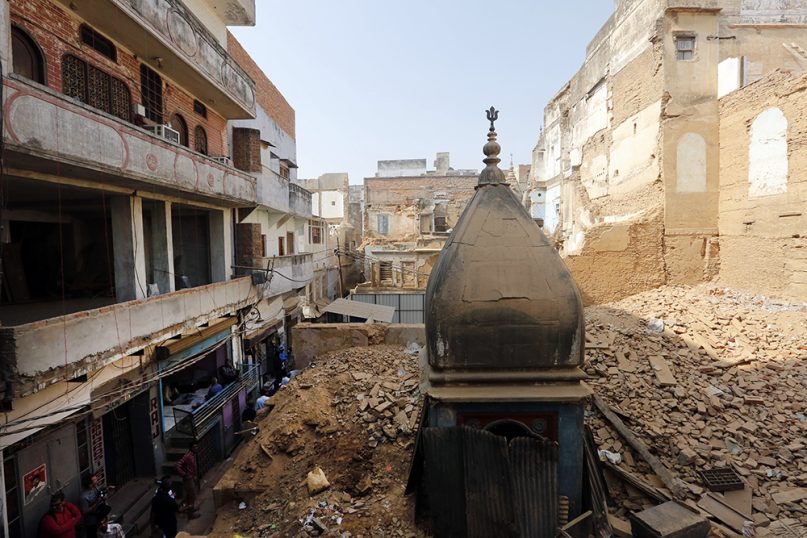
Rubble from demolished buildings cover a temple in Varanasi, India, on Nov. 24, 2018. Demolition work is being carried out for the Kashi Vishwanath Temple Corridor, which aims to connect the Kashi Vishwanath Temple in Varanasi and the River Ganges. The ancient city of Varanasi is considered one of the oldest continuously inhabited cities in the world. (AP Photo/Rajesh Kumar Singh)
VARANASI, India (RNS) — Even now, with the courtyard of his 600-year-old home reduced to a heap of debris, Ram Nath carries a pitcher of holy water from the River Ganges every day to perform his rites to the Hindu god Shiva.
“For generations, we ritually purified our Shiva deities before daybreak,” says Nath, 68, pointing to the ruins of the house’s sanctum, where he performs puja.
Above Nath’s courtyard looms a ravaged landscape where hundreds of other ancient structures have been destroyed by the ruling Hindu nationalist BJP government to make way for an $85 million Kashi Vishwanath Temple Corridor.
The 300-meter-long corridor is Prime Minister Narendra Modi’s “dream project” of connecting the eighteenth-century Kashi Vishwanath Temple, a shrine dedicated to Lord Shiva, to the steps leading to the banks of the Ganges.
RELATED: India’s Hindu prime minister touts hometown’s Buddhist links as vote nears
But the plans have brought major changes and controversy to Varanasi—a prime Hindu pilgrimage center, one of the world’s oldest continually inhabited cities. Also known as Kashi, Varanasi has always been defined by its maze of narrow alleyways, palaces, heritage homes and centuries-old temples.
Many city residents see the project as a blow to Hindu spirituality, while devotees across the world who come here to seek moksha, or transcendence, are enraged.
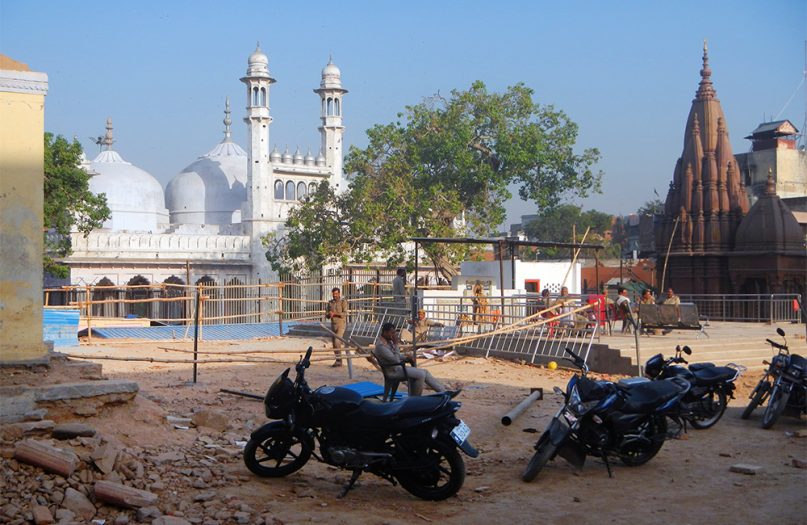
Police guard the site where the Vishwanath Temple and Gyan Vapi Mosque stand in Varanasi, India. RNS photo by Priyadarshini Sen
The refurbished temple precincts will include an auditorium, museum, wellness centers, boutiques and expanded 50-foot-wide pathways, according to Vishal Singh, CEO of the Kashi Vishwanath Special Area Development Board.
“The rationale behind the project is to decongest Varanasi and have state-of-the-art facilities,” said Singh.
When Modi came to Varanasi to lay the cornerstone for the corridor in early March, he declared it “the beginning of the liberation of the Kashi Vishwanath Dham,” using the Hindi word for a key pilgrimage site.
The prime minister explained that Lord Shiva was feeling “suffocated” due to the lack of space around the Vishwanath temple.
But in rebooting Varanasi as a swank mecca for Hindus, the BJP government has not only altered the city’s topography but laid bare fault lines in the local community.
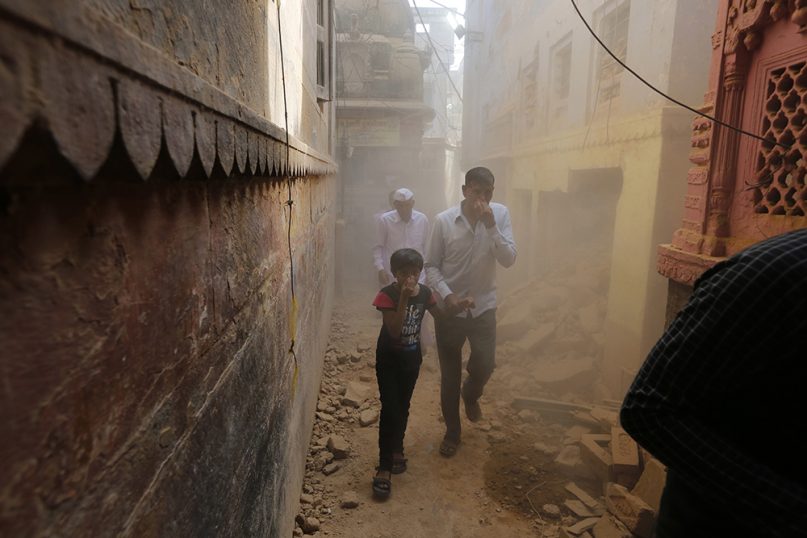
People walk down a narrow lane covered with dust caused by demolition of buildings in Varanasi, India, on Nov. 24, 2018. Demolition work is being carried out for the Kashi Vishwanath Temple Corridor. (AP Photo/Rajesh Kumar Singh)
Many old neighborhoods predating the temple have effectively been wiped out, and with them, time-honored traditions. Thousands of residents evicted from these neighborhoods now face a bleak future.
“Kashi is the oldest living city,” says Krishna Kumar Sharma, who long served in the BJP’s parent organization, Rashtriya Swayamsevak Sangh. “The maze of narrow alleyways, imposing ghats and temples imbued Varanasi with a unique spiritual flavor.”
Though a staunch Hindu nationalist, Sharma blames the Modi government for decimating Varanasi’s rich cultural heritage through “visionless development.”
Batuk Dutt Shastri, a leading Sanskrit scholar, even compares the demolitions to the 18th-century Mughal King Aurangzeb’s onslaughts on the temple town, which forced many Hindus to build secret altars in their homes.
“Modi is the new-age Aurangzeb,” says Shastri, incensed by the government’s destruction of more than 270 homes and 15 neighborhoods to clear 45,000 square meters of space for the corridor.
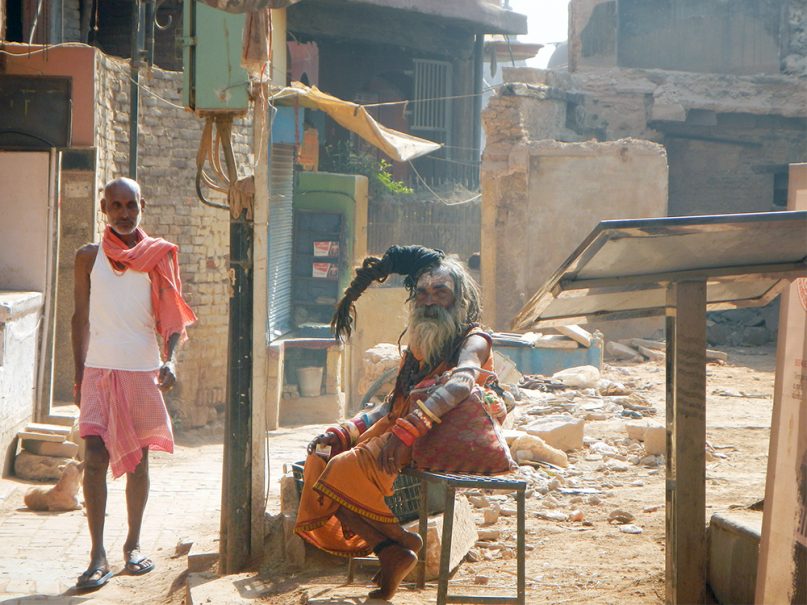
A Hindu ascetic sits amid demolished areas in Varanasi, India. RNS photo by Priyadarshini Sen
Munna Lal, a former resident of a low-caste neighborhood in the vicinity, said widespread evictions have been underway since February last year.
“Initially, government officials tried to lure gullible residents with hefty compensations. Then fear-mongering became rampant,” says Lal.
Lal said government agents threatened his neighbors, cut off their electricity and water lines, and polarized families.
Slowly, the ancient houses, typically crammed side by side in narrow alleyways, emptied out, and the neighborhoods were flattened by government contractors.
The demolitions also swept up some Hindu monasteries, old-age homes, artwork, sculptures and shops that had existed for generations.
Sanjay Kumar, who sells saris in his small shop in one of the area’s narrow alleyways, says that more than 500 of his fellow shopkeepers, who used to sell flowers, sweetmeats, perfume and religious memorabilia to devotees, have been stripped of their livelihoods, while others face the imminent threat of eviction.
Kumar’s shop is now in the “red zone,” a high-security area skirting the demolition site, making it out of bounds for most devotees.
“Earlier I used to earn $430 a month, but now my earnings have dwindled to less than half,” says Kumar. “For us, Kashi wasn’t a business, it was our way of life.”
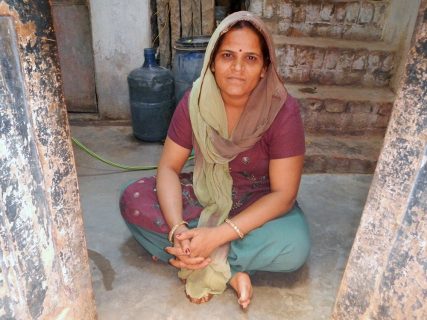
Shopkeeper Anamika Madhukar has resisted the demolition of her house near the Kashi Vishwanath Temple in Varanasi, India. RNS photo by Priyadarshini Sen
Initially, residents were willing to support the idea of widening alleys and beautifying temples and even cede portions of their homes to the project. “We were okay with some changes,” said shopkeeper Anamika Madhukar, who has been served five eviction notices since last April. “But power and business interests drove the government to start the demolitions without a roadmap.”
The renovation has had social ramifications, too, fracturing the harmony that prevailed in the neighborhoods and among the shopkeepers and other tradespeople despite caste differences. In their tightly knit communities, inhabitants relied on each other for emotional, financial and spiritual support.
S.M. Yaseen, an official at the adjacent Gyan Vapi Mosque, said that Varanasi has avoided the violent flare-ups over religious differences that have roiled India over the last few decades.
But some fear that may change. Last October, part of a boundary wall separating the Gyan Vapi Mosque and the temple was demolished, a move Yaseen called “a test to gauge the Muslim temper. Kashi is sitting on a tinderbox, and our mosque is exposed.”
Fearing tensions, the district administration quickly restored the demolished structure.
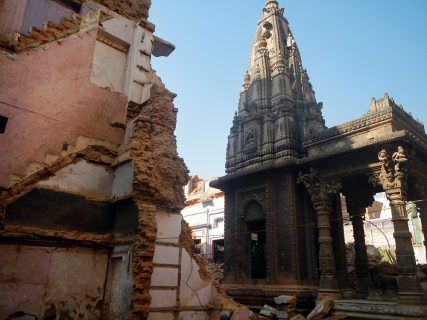
A centuries-old Hindu temple still stands amid demolished structures in Varanasi, India. The demolition work is to make room for the Kashi Vishwanath Temple Corridor. RNS photo by Priyadarshini Sen
In January, Muslims opposed to the corridor plan joined pro-Hindu groups to petition the government “not to crush the soul of Kashi.”
Despite the united opposition, the Uttar Pradesh state government, led by right-wing Hindutva firebrand Yogi Adityanath, has moved rapidly on the corridor plan.
The BJP believes the “beautification of Varanasi” will boost religious tourism.
Local supporters of the government’s plan say they are tired of choked lanes during festivals when millions of devotees jostling for space can take eight hours to enter the temple.
“The alleyways are claustrophobic and lack basic amenities,” said Anup Mishra, a professor of economics at the Benaras Hindu University in Varanasi.
But many others fear the initiative will destroy an ancient city steeped in its spiritual traditions.
“Modi’s dream project has ruined the spiritual seat of Hinduism,” said businessman Yogendra Vyas. “In Kashi, there were gods and goddesses everywhere you looked — in houses, underground chambers, courtyards… the mystical search was endless.”
For pilgrims, the tortuous alleyways were part of their mystical journeys through the ancient city, and the narrow lanes brought together people of all castes and regions.
“Pilgrimage on foot ensured equality,” said Anju, a caretaker of the soon-to-be demolished majestic ancient mansion known as a halevi that houses the famed Amriteshwar Temple. Now, she said, earthy pilgrimages will make way for high-end religious tourism.
“We believed Lord Shiva roamed these alleyways and visited our homes to bless us,” said Nath. “It was our living city.”
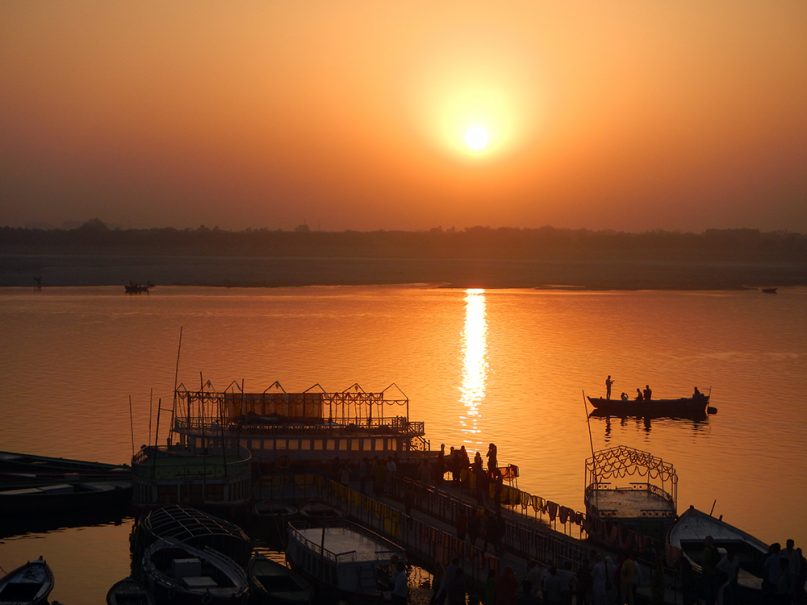
The Ghats of Varanasi, or steps leading to the River Ganges, have been abuzz recently with concerns around demolition of centuries-old temples, neighborhoods and alleyways as an area is cleared for a new corridor. RNS photo by Priyadarshini Sen
